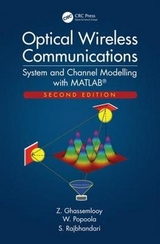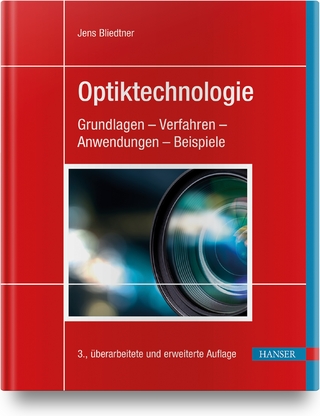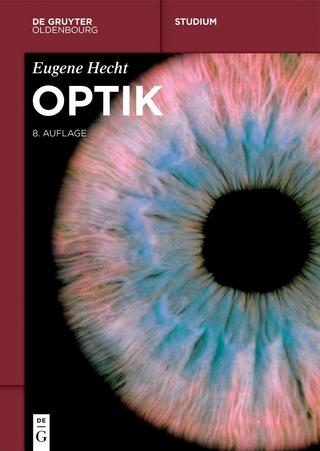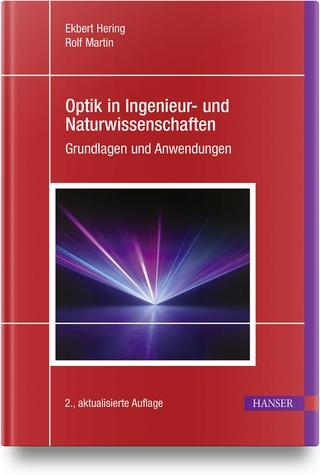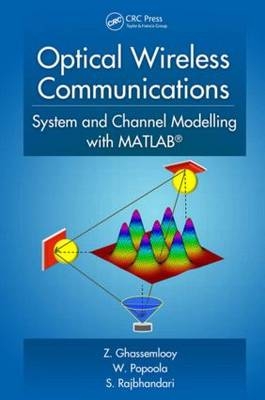
Optical Wireless Communications
Crc Press Inc (Verlag)
978-1-4398-5188-3 (ISBN)
- Titel erscheint in neuer Auflage
- Artikel merken
Incorporating MATLAB® throughout, the authors highlight past and current research activities to illustrate optical sources, transmitters, detectors, receivers, and other devices used in optical wireless communications. They also discuss both indoor and outdoor environments, discussing how different factors—including various channel models—affect system performance and mitigation techniques.
In addition, this book broadly covers crucial aspects of OWC systems:
Fundamental principles of OWC
Devices and systems
Modulation techniques and schemes (including polarization shift keying)
Channel models and system performance analysis
Emerging visible light communications
Terrestrial free space optics communication
Use of infrared in indoor OWC
One entire chapter explores the emerging field of visible light communications, and others describe techniques for using theoretical analysis and simulation to mitigate channel impact on system performance. Additional topics include wavelet denoising, artificial neural networks, and spatial diversity. Content also covers different challenges encountered in OWC, as well as outlining possible solutions and current research trends. A major attraction of the book is the presentation of MATLAB simulations and codes, which enable readers to execute extensive simulations and better understand OWC in general.
Professor Zabih Ghassemlooy (CEng, Fellow of IET, senior member of IEEE) received his BSc (Hons.) in electrical and electronics engineering from the Manchester Metropolitan University in 1981, and his MSc and Ph.D in optical communications from the University of Manchester Institute of Science and Technology thereafter in 1984 and 1987, respectively. Currently he is an associate dean for research in the School of Computing, Engineering and Information Sciences, University of Northumbria at Newcastle upon Tyne, UK. He also heads the Northumbria Communications Research Laboratories within the school. His research interests are mainly in the area of optical communications, and published over 415 papers. He is the founder and the chairman of the IEEE, IET International Symposium on Communication Systems, Network and Digital Signal Processing. Dr. W. Popoola had his national diploma in electrical engineering from The Federal Polytechnic, Ilaro, Nigeria and later graduated with first class honours degree in electronic and electrical engineering from Obafemi Awolowo University, Nigeria. He later proceeded to Northumbria University at Newcastle upon Tyne, England, UK, for his MSc in optoelectronic and communication systems where he graduated with distinction in 2006. He was awarded his Ph.D. in 2009 at the Northumbria University for his research work in free-space optical communications. He is currently a researcher with the Institute for Digital Communications, University of Edinburgh, UK working on visible light communications. Dr. S. Rajbhandari obtained his bachelor degree in electronics and communication engineering from the Institute of Engineering, Pulchowk Campus (Tribhuvan University), Nepal in 2004. In 2006, he received an MSc in optoelectronic and communication systems with distinction and was awarded the P. O. Byrne prize for most innovative project. He then joined the Optical Communications Research Lab (OCRG) at Northumbria University and was awarded a Ph.D degree in 2010. Since 2009, he has been with the OCRG at Northumbria University working as a postdoctoral researcher. He has published more than 70 scholarly articles in the area of optical wireless communications.
Introduction: Optical Wireless Communication Systems
Wireless Access Schemes
A Brief History of OWC
OWC/Radio Comparison
Link Configuration
OWC Application Areas
Safety and Regulations
OWC Challenges
Optical Sources and Detectors
Light Sources
Light-Emitting Diode
The Laser
Photodetectors
Photodetection Techniques
Photodetection Noise
Optical Detection Statistics
Channel Modelling
Indoor Optical Wireless Communication Channel
Artificial Light Interference
Outdoor Channel
Modulation Techniques
Introduction
Analogue Intensity Modulation
Digital Baseband Modulation Techniques
Pulse Position Modulation
Pulse Interval Modulation
Dual-Header PIM
Multi-Level DPIM
Comparisons of Baseband Modulation Schemes
Subcarrier Intensity Modulation
Orthogonal Frequency Division Multiplexing
Optical Polarization Shift Keying
Appendices
System Performance Analysis: Indoor
Effect of Ambient Light Sources on Indoor OWC Link Performance
Effect of FLI without Electrical High-Pass Filtering
Effect of Baseline Wander without FLI
Effect of FLI with Electrical High-Pass Filtering
Wavelet Analysis
Link Performance for Multi-path Propagation
Mitigation Techniques
Equalization as a Classification Problem
Introduction to Artificial Neural Network
Training Network
The ANN-Based Adaptive Equalizer
FSO Link Performance under the Effect of Atmospheric Turbulence
On–Off Keying
Pulse Position Modulation
Subcarrier Intensity Modulation
Atmospheric Turbulence-Induced Penalty
Appendices
Outdoor OWC Links with Diversity Techniques
Atmospheric Turbulence Mitigation Techniques
Receiver Diversity in Log-Normal Atmospheric Channels
Transmitter Diversity in a Log-Normal Atmospheric Channel
Transmitter–Receiver Diversity in a Log-Normal Atmospheric Channel
Results and Discussions of SIM-FSO with Spatial Diversity in a Log-Normal Atmospheric Channel
SIM-FSO with Receiver Diversity in Gamma–Gamma and Negative Exponential Atmospheric Channels
Terrestrial Free Space Optical Links with Subcarrier Time Diversity
Aperture Averaging
Appendices
Visible Light Communications
Introduction
System Description
System Implementations
Multiple-Input-Multiple-Output VLC
Home Access Network
References
| Zusatzinfo | following page 246 a 16-page 4/c insert with 32 figures (one figure contains an a,b,c,and d.); 547; 53 Tables, black and white; 268 Illustrations, black and white |
|---|---|
| Verlagsort | Bosa Roca |
| Sprache | englisch |
| Maße | 156 x 234 mm |
| Gewicht | 953 g |
| Themenwelt | Naturwissenschaften ► Physik / Astronomie ► Optik |
| Technik ► Nachrichtentechnik | |
| ISBN-10 | 1-4398-5188-3 / 1439851883 |
| ISBN-13 | 978-1-4398-5188-3 / 9781439851883 |
| Zustand | Neuware |
| Haben Sie eine Frage zum Produkt? |
aus dem Bereich
